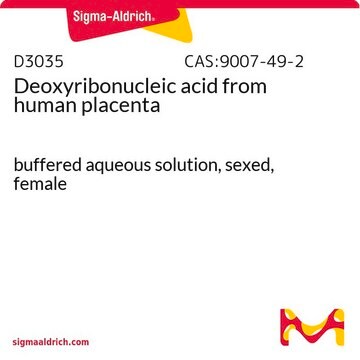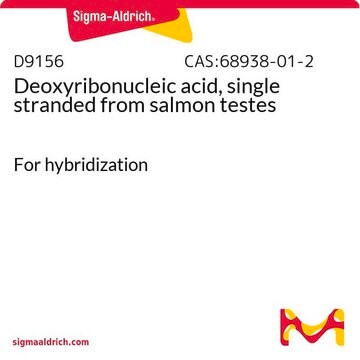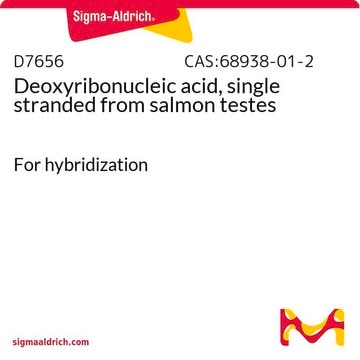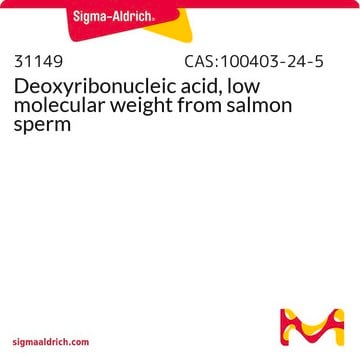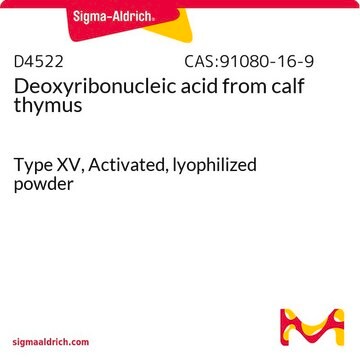D3287
Deoxyribonucleic acid, single stranded from human placenta
About This Item
Recommended Products
grade
for molecular biology
description
For hybridization
form
solution
mol wt
(Fragments from 587-831 bp.)
solubility
water: 9-12 mg/mL
storage temp.
−20°C
InChI
1S/C15H31N3O13P2/c16-13-1-7(20)11(28-13)5-25-32(21,22)31-9-3-15(18)29-12(9)6-26-33(23,24)30-8-2-14(17)27-10(8)4-19/h7-15,19-20H,1-6,16-18H2,(H,21,22)(H,23,24)
InChI key
AWBASQCACWFTGD-UHFFFAOYSA-N
Looking for similar products? Visit Product Comparison Guide
General description
Application
In order to decrease any non-specific hybridization of the probe to a substrate, blocking agents must be used. Generally, a combination of blocking reagent, detergent, and denatured, fragmented DNA is used to accomplish this. Sigma offers sonicated, denatured DNA from a variety of species for use as a blocking agent in Northern and Southern blotting and other nucleic acid hybridization techniques.
Features and Benefits
• DNA fragments of defined sizes.
Components
of 9-12 mg/ml DNA in 100mM phosphate buffer. However, it will reanneal on standing at room temperature so it is recommended to boil the solution for 10 minutes and then cool on ice for at least 5 minutes prior to use. Cooling on ice will
reduce the chances for reannealing, as it is more likely to reanneal if cooled at room temperature.
related product
Storage Class Code
11 - Combustible Solids
WGK
WGK 3
Flash Point(F)
Not applicable
Flash Point(C)
Not applicable
Personal Protective Equipment
Certificates of Analysis (COA)
Search for Certificates of Analysis (COA) by entering the products Lot/Batch Number. Lot and Batch Numbers can be found on a product’s label following the words ‘Lot’ or ‘Batch’.
Already Own This Product?
Find documentation for the products that you have recently purchased in the Document Library.
Customers Also Viewed
Our team of scientists has experience in all areas of research including Life Science, Material Science, Chemical Synthesis, Chromatography, Analytical and many others.
Contact Technical Service
